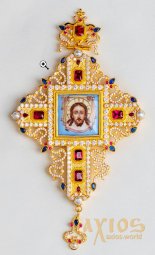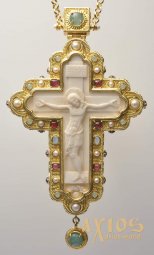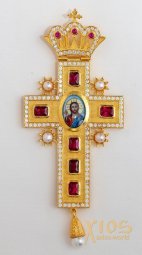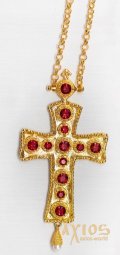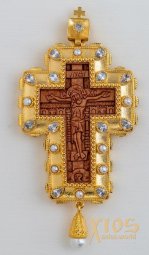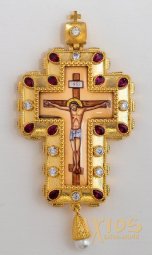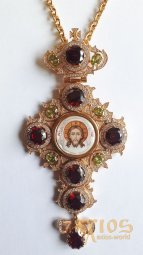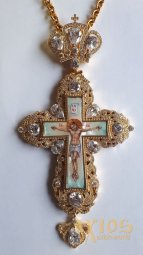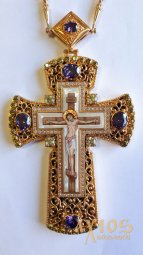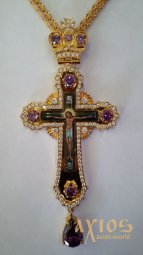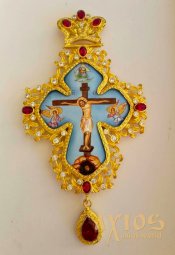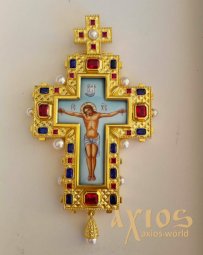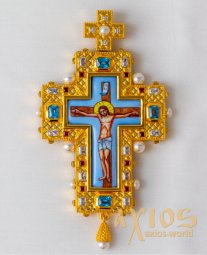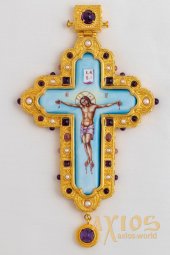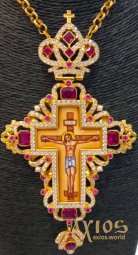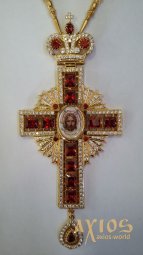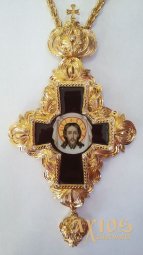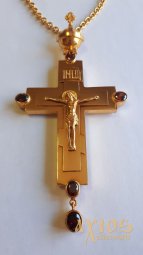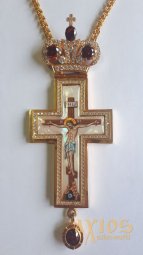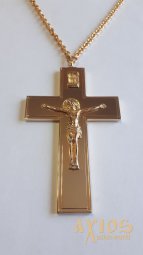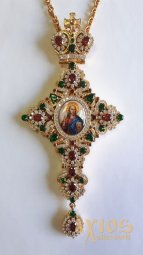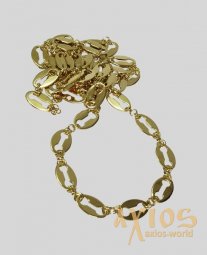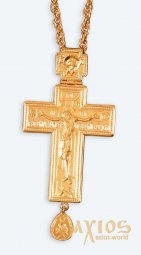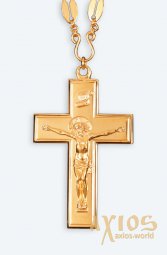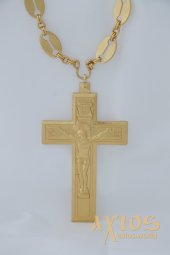Pectoral Crosses
The pectoral cross is a medium-sized priest’s cross worn over liturgical robes or a cassock on a chain. Today we are so used to see a priest with a cross on his neck that this image of the Orthodox presbyter has become typical. But in fact, crosses for clergymen were introduced into church practice only a couple of centuries ago, and not even by church, but by secular authorities.
When did ministers of the Church begin to wear pectoral crosses?
The story of the appearance of pectoral (chest) crosses originates with the appearance of encolpions - large underbody crosses, often with built-in particles of the relics of the martyrs or other shrines. Such voluminous crosses were worn not only by persons of a spiritual rank, but also by emperors or representatives of the upper classes of society. Over time, such crosses became part of the vestments exclusively of bishops and were worn by bishops only during worship. Since the 17th century, archimandrites began to wear the chest cross in Ukraine - that is, monks-rectors of large monasteries, such as the Kiev Pechersk Lavra or the Kiev Bratsky Monastery. This practice was taken from the Greek tradition and introduced into use during the hierarchy of Metropolitan Peter Mohyla. At the same time, only bishops wore crosses in the Moscow kingdom.
The rulers of the empire and the crosses for all priests
Already after the reassignment of the Kiev Metropolis from Constantinople to Moscow, this difference became very noticeable. Empress Elizabeth drew attention to this and gave the right to Russian archimandrites to wear a pectoral cross in 1742. In the same year, the confessor of Elizabeth, Archpriest Theodore Dubyansky, the first of the married priesthood, also received this right. Empress Catherine also awarded her confessor a cross, and Emperor Paul introduced the chest cross in 1797 as the highest award for priests for their long and hard service. The same crosses were received by clergymen serving abroad of the empire. In general, compulsory crosses for priests throughout the empire were introduced by decree of Emperor Nicholas II in 1896 in honor of his coronation.
That is, the introduction of crosses for all priests was made only about 130 years ago and not by the patriarch or bishops, but by the secular monarch. Why did secular rulers become the founders of the tradition of wearing crosses for married priests? The fact is that from 1721 to 1918 the church on the territory of the entire Russian Empire, which included most of the Ukrainian lands, was headed not by the patriarch, but by the Synod, which was subordinate to the emperor or empress. The bishops could not transfer to the will of the monarch, much less to his decree. In the churches of the Greek tradition, as in the 17th century, only bishops and archimandrites wear crosses. In the Romanian Church, proto-deacons, rather than presbyters, wear crosses as a reward.
Priest’s crosses in modern Ukraine
In modern practice of Ukrainian churches, all priests wear pectoral crosses. However, there is some gradation here: each priest receives the usual silver-plated cross during ordination. The right to wear a cross with jewelry made of semiprecious stones is a reward and is not given immediately, but after 5-10 years of service. Many priests, having received this right, have several crosses for worship, choosing them according to the color of vestments, depending on the requirements of the charter. Crosses for a priest are not jewelry, but an element of liturgical vestments. The clergy wear them only in the temple or during official events.
Where can you buy a pectoral cross for a priest?
You can buy a cross for a priest in the Axios online store by making just a couple of clicks on our website. We have a wide selection of pectoral crosses, as well as other elements of vestments and church utensils. We provide fast delivery to anywhere in Ukraine and the world.
Sat-Sun 10:00-19:00





.png)


